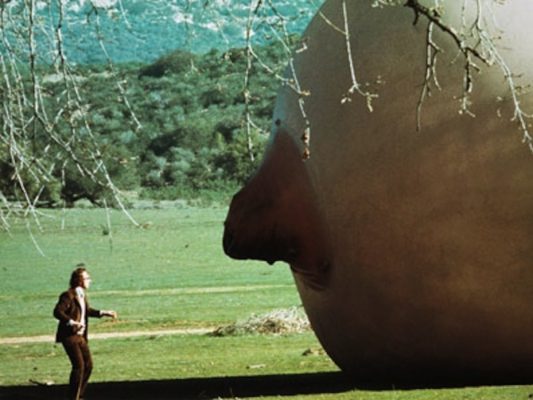Search
To search for an exact match, type the word or phrase you want in quotation marks.
A*DESK has been offering since 2002 contents about criticism and contemporary art. A*DESK has become consolidated thanks to all those who have believed in the project, all those who have followed us, debating, participating and collaborating. Many people have collaborated with A*DESK, and continue to do so. Their efforts, knowledge and belief in the project are what make it grow internationally. At A*DESK we have also generated work for over one hundred professionals in culture, from small collaborations with reviews and classes, to more prolonged and intense collaborations.
At A*DESK we believe in the need for free and universal access to culture and knowledge. We want to carry on being independent, remaining open to more ideas and opinions. If you believe in A*DESK, we need your backing to be able to continue. You can now participate in the project by supporting it. You can choose how much you want to contribute to the project.
You can decide how much you want to bring to the project.

Femen is an organisation of feminist activists that is basically dedicated to baring their breasts where ever they think it is necessary, such as outside the conclave of the election of the Pope, when Berlusconi went to vote in the last elections (boobs for Berlusconi!), or in the more recent “Yihad Topless” called to defend Amina, a Tunisian girl who showed her nude torso on the internet to “protest against the situation of women in the Arab world”. Many didn’t understand her protest, including a sector of women in Tunisia who stated “we can defend our rights with our clothes on”. Maybe Femen have been inspired by Caesar’s Memoires, where he describes the Gallic women of Avaricum, who pleading for pity from the Roman soldiers bared their breasts in an imploring gesture (a passis manibus with breasts). The subject that interests me is not if the Femen are well read, but why boobs are still so provocative in 2013, the era of “Ups de la Cuore” and the redtube.
In “The work of art in the age of mechanical reproduction” Walter Benjamin discusses the loss of aura of the work of art, the consequence of new methods of exhibition: film and photography. We substitute aura for areola. So the breast has lost its areola in the age of mechanical reproduction: Internet and cable television. Its “cultural value” doesn’t matter, so much as its “exhibition value”. However, the bringing up to date of Walter’s theories explodes like Obregón’s breasts when the disappearance of the areola is validated in a literal manner; imperial censorship. The exhibitive value goes hand in hand with the inhibitive value.
In the USA, censorship, prior or post, comes to the Oscar, the Grammy and even the first book of Where is Wally. In various states of the North American country showing your breasts in public is a crime. The “Boob-gate” of Janet Jackson was a schism. In the empire breasts are a threat. The Yankee censor put his hands to the udder, erasing the areola of all mainstream boobs. It doesn’t matter if a boob without its areola becomes a face without a nose, the baldpate of a parish priest or a bromide pill.
Breasts have been implanted with politically loaded silicon, from the image of the French revolution, to the defiant emblem (also French) of the First World War. In Spain, to give an identifiable example, we have the act of awarding prizes of the Diario Pueblo with Tierno Galván, Susana Estrada and her special guest, a red nipple politically exploited, much to the delight of the happy mayor. Art is more creative, from early feminism, to the art actions of J.J. Lebel in his work La France, (in which a nude woman ridicules the messianic role of De Gaulle), or artists who have wanted to deconstruct the breast, like Frederic Amat, Emily Dutchman or Antonio de la Rosa.
The breast has suffered a thousand re-significations, but the danger continues latent and lactating; that of the Felliniesque hyper-boob, that Woody Allen parodied in “Everything you always wanted to know about sex”. Here we enter into Freudian terrain, a minefield only to be entered with a bomb-disposal device.

His intention is to continue to improve his writing of art criticism; everything else is enjoying and learning from contemporary proposals, establishing other strategies of relations, either as a contributor to magazines, editor of a review, curator or lecturer. As a backpacking art critic, he has shared moments with artists from Central America, Mexico and Chile. And the list will continue. Combating self-interested art, applauding interesting art.
"A desk is a dangerous place from which to watch the world" (John Le Carré)